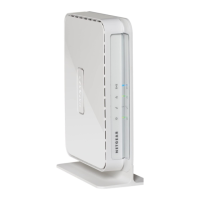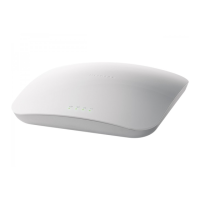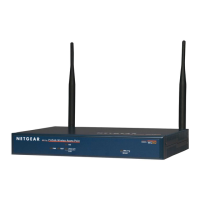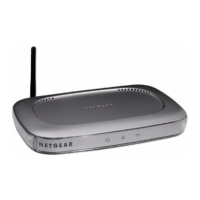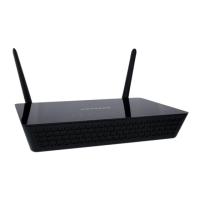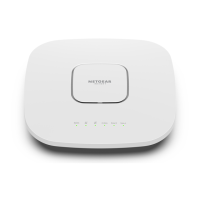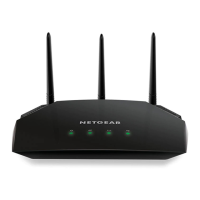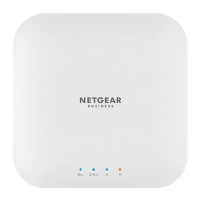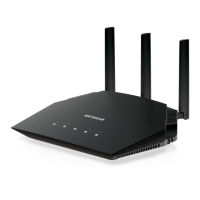Installation
NETGEAR ProSAFE Dual Band Wireless AC
Access Point
WAC740
Set Up the Access Point
Before mounting the access point in a high location, first set up and test the
access point to verify WiFi network connectivity.
IMPORTANT: You can deploy the WAC740 access point only in a WiFi
network that is managed by a ProSAFE wireless controller.
¾ To cable the access point:
1. Connect an Ethernet cable from LAN port 1 on the access point to a
LAN port on a PoE+ switch, that is, an 802.3at-compatible switch.
2. Connect an Ethernet cable from the PoE+ switch to an Ethernet port on
the computer.
3. Check the LEDs to verify that the access point is set up correctly.
LED Description
Power LED
•O. Power is o.
•Solid green. Power is on.
•Alternating green and amber. The access point receives insucient PoE
power.
•Solid amber, then blinking amber. A self-test is running or firmware is
being loaded. During startup, the Power LED first light solid amber, then
goes o, and then blinks amber before turning solid green aer about
one minute. If aer two minutes the Power LED remains solid amber or
continues to blink amber, it indicates a system fault.
Activity LED
•O. No link with the network is detected.
•Solid green. A link with the network is detected.
•Blinking green. Network trac is detected.
Package Contents
Unpack the box and verify the contents:
• WAC740 ProSAFE Dual Band Wireless AC Access Point
• Category 5e Ethernet cable
• Ceiling mount kit
LED Description
LAN LED 1
•O. A 10 Mbps Ethernet link is detected or no Ethernet link is detected.
•Solid green. A 2.5 Gbps or 1 Gbps Mbps Ethernet link is detected.
If both LAN LED 1 and LAN LED 2 light solid green, the LAN ports are
members of a link aggregation group (LAG).
•Solid amber. A 100 Mbps Ethernet link is detected.
LAN LED 2
•O. A 10 Mbps Ethernet link is detected or no Ethernet link is detected.
•Solid green. A 1 Gbps Ethernet link is detected.
If both LAN LED 1 and LAN LED 2 light solid green, the LAN ports are
members of a link aggregation group (LAG).
•Solid amber. A 100 Mbps Ethernet link is detected.
2.4G WLAN LED
•O. The 2.4 GHz WiFi radio is o.
•Solid green. The 2.4 GHz WiFi radio is on.
•Blinking green. WiFi activity is detected on the 2.4 GHz WiFi radio.
5G WLAN LED
•O. The 5 GHz WiFi radio is o.
•Solid green. The 5 GHz WiFi radio is on.
•Blinking green. WiFi activity is detected on the 5 GHz WiFi radio.
The access point uses a DHCP client that is enabled by default. If your network
includes a DHCP server, the access point obtains an IP address from the DHCP
server. If your network does not include a DHCP server, the access point sets
its IP address to a static IP address of 192.168.0.160.
If your network includes a DHCP server, note the following:
• Make sure that option 43 is enabled on the DHCP server.
• Make sure that the DHCP server specifies the IP address of the wireless
controller.
• We recommend that you reserve an IP address for the access point on the
DHCP server.
If your network does not include a DHCP server, configure a computer with a
static IP address of 192.168.0.210 and a subnet mask of 255.255.255.0 so
you can connect to the access point at IP address 192.168.0.160.



